Best Bamboo Screening Plants Species to Use Right Now
0Shares
Bamboo plants are ideal for creating a fence or hedge as they grow fast and tall. Within just three years, you can have some bamboo species already in their prime. It is why now people are opting for bamboo screening plants as they have so much to offer.
Considering that there are many bamboo species available, not all of them will be ideal as screening plants. We will later in this guide look at the best bamboo plants to use to create a privacy screen for your home.
Choosing the Best Bamboo Screening Plants
 Photo credit: Pinterest
Photo credit: Pinterest
Below, we look at the important features you should consider when choosing the best bamboo screening plants.
Clumping or running type
Bamboo plants fall under two main categories. They include clumping bamboo and running bamboo.
Clumping bamboo is the non-invasive type. It is preferred by most people who want to create bamboo screens. The is because the bamboo clumps will stay in one place. Such bamboo species also grow from the center outward. This makes it easy to control its spread. You can now use such bamboo plants to make screens without using planters. Of course, when you can, it is okay to plant them in various planter boxes.
Running bamboo is the invasive type. For this reason, they are not preferred for privacy screens. The main reason is that the roots can quickly and randomly spread to various areas around your compound. They can also spread out easily without any uniformity. That is not something you want in your privacy screen. If you still want to use the running bamboo in your screen, then consider installing a barrier or a planter. Some people put up concrete walls to prevent the roots from going out of the desired area.
For many people, they would opt for the clumping bamboo species as they are easy to grow and control.
The appearance
Bamboo screening plants are available in many colors. It comes down to what you would want for your fence. Also, they can vary in terms of height, diameter, and texture. Each of these factors determine how the privacy screen looks once it is in place.
So, what are some of the colors should you expect? Here are the common bamboo colors.
- Blue
- Black
- Red
- Brown
- Yellow
- Green
Sometimes, you can get a bamboo plant having colors which are a combination of the many colors mentioned above.
Most bamboo plants can grow to over 98 feet in length and have a diameter of 12 inches. So, choosing the bamboo plant for a screen based on size is a personal preference.
The sensitivity
Another important consideration is the environmental sensitivity requirements that your bamboo screening plants might need over time. Without considering this factor, it might be hard to come up with an effective bamboo privacy screen.
As expected, some bamboo species will be more sensitive than others. Some will flourish in the tropical climate while others are best grown in cooler climates. The resistance to cold weather will also vary from one bamboo species to another. The same applies to hardiness temperatures. So, it is best to consider researching more about the species to understand its needs more.
The USDA Plant Hardiness Zone Map is your friend to help you decide whether the plants can thrive in your area or not. It is best to familiarize yourself with the various zones before buying the bamboo screening plants.
Care requirements
Bamboo plants are not necessarily maintenance-intense plants, but they still need some maintenance to help them grow better. Some of the care requirements you might have to do include watering, pruning, fertilizing, and trimming. Depending on the type of bamboo species, some might need more maintenance than others.
The best part is that you should easily get information about caring for various bamboo varieties before planting them.
Below are some tips for caring for your bamboo screening plants
Bamboo Species Best for Screen
Seabreeze Bamboo (Bambusa Malingensis)
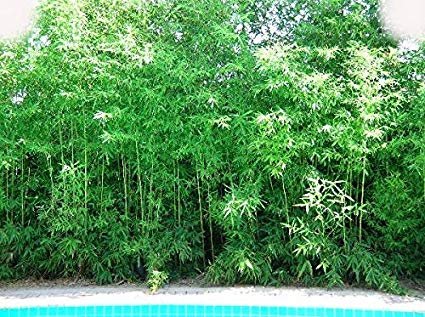 Photo credit: Amazon
Photo credit: Amazon
This species is ideal for creating beautiful privacy screens mostly in the coastal areas. These plants are liked for having small dark green culms and wood with a fine grain.
Seabreeze bamboo has its roots in Southern China, but has been adapted to grow in other areas. It is a cold-hardy plant, so you should find it ideal for cold areas. It is possible for the plant to withstand temperatures going as low as 15 degrees F.
The species does not only withstand low temperatures, but also remain resilient to drought and floods. It is also wind resistant and that is why it would be ideal for the coastal regions.
You will find Seabreeze bamboo as a fast-growing plant. It also needs a moderate amount of water to grow effectively. For many, this is the best choice for privacy screens as it is robust and grows fast.
Tropical Blue Bamboo (Blue Chungii)
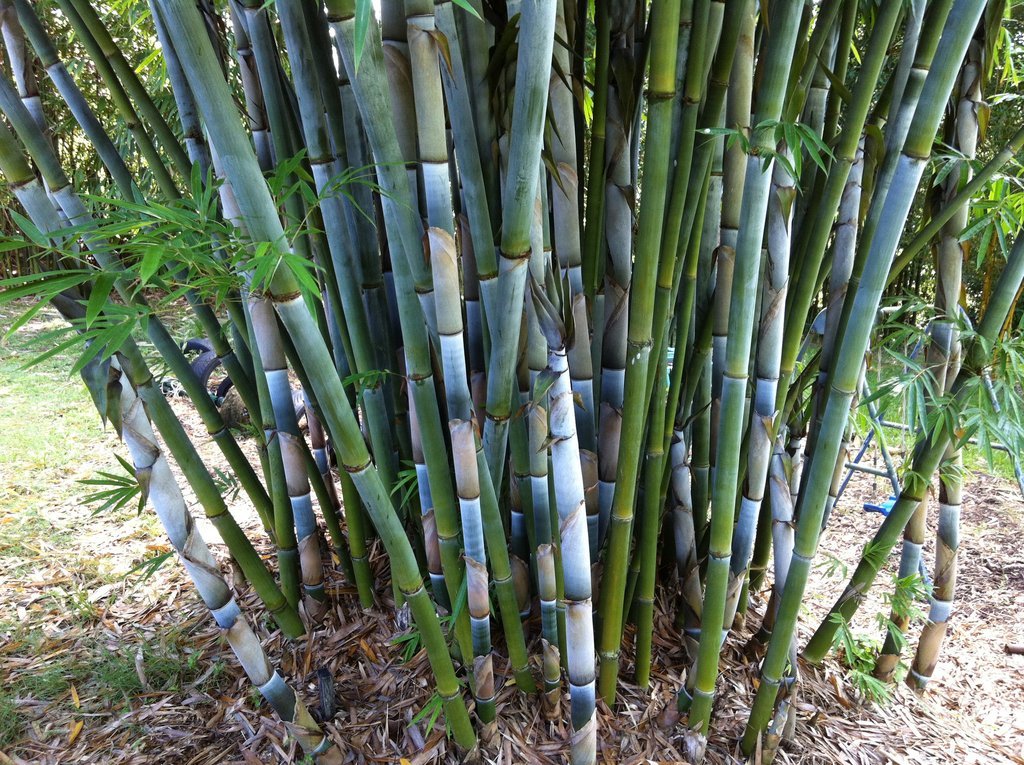 Photo credit: Bamboo Plants Online
Photo credit: Bamboo Plants Online
This type of bamboo species is another top choice for anyone creating a privacy screen. People love it for bamboo screening plants because of its appealing color. The culms have long internodes and an impressive blue hue. You will also notice that the branches and leaves have a rich vibrant green color.
The Tropical Blue Bamboo species is the clumping type, meaning that it will be easy to control it. It can withstand low temperatures of 20 degrees F. As a result, it can be ideal for both cold and warm environments. It does not require a lot of maintenance, so you should have a great time using them.
Weaver’s Bamboo (Bambusa Textilis Gracilis)
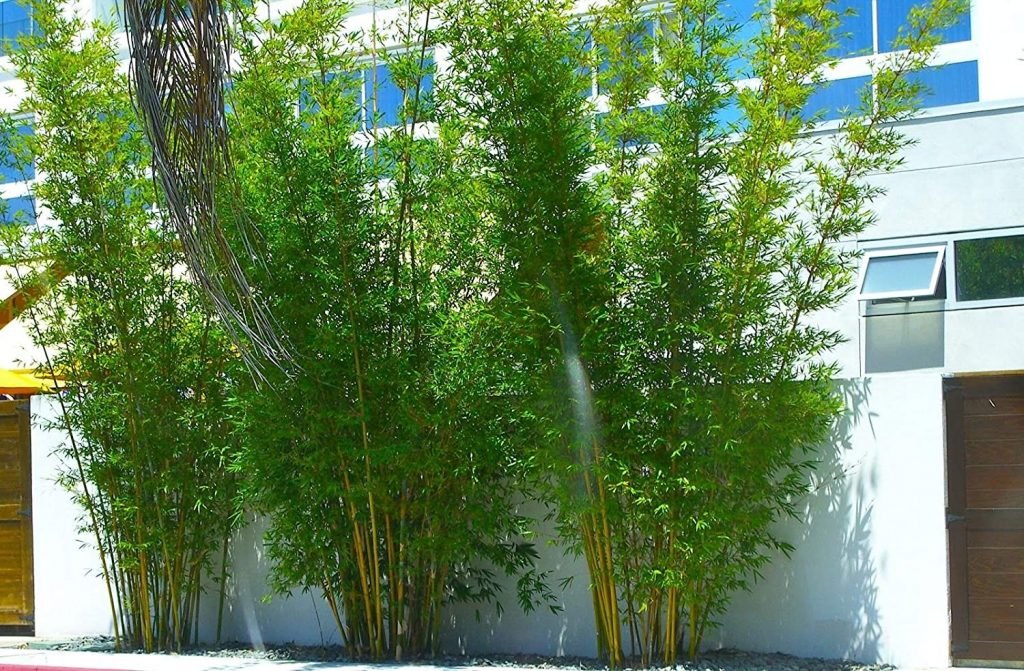 Photo credit: Amazon
Photo credit: Amazon
This is another fabulous choice for creating privacy screens. This is because these plants come with an evergreen foliage. Many people love them as the plants will remain green no matter the season of the year. As for the culm, they have a vibrant yellow-green color.
How about the water needs? Well, these plants need an average amount of water to grow. No too much or too little. These plants can also tolerate wind, heat, and cold. So, it should be easy to grow them in various environments.
This species can be great to grow in pots both outdoors and indoors. If you line up several pots of this plant, you should have a great privacy screen.
Giant Timber Bamboo (Bambusa Oldamii)
 Photo credit: eBay
Photo credit: eBay
From the name of the species, it is easy to see that they would be tall plants. The best part is that they are non-invasive and clumping type. These plants are large, tall, and will be clumped together tightly. You can expect to see different shades of green and brown for the foliage.
Since they are large plants, they will need a lot of fertilizer and water to grow in the first year. Once they have a nice start, it should then be easy for the plants to grow to full potential over the next 3 to 5 years.
Whenever you use these plants, expect to get a high and substantial privacy screen.
Thai Silk Bamboo (Bambusa Nana)
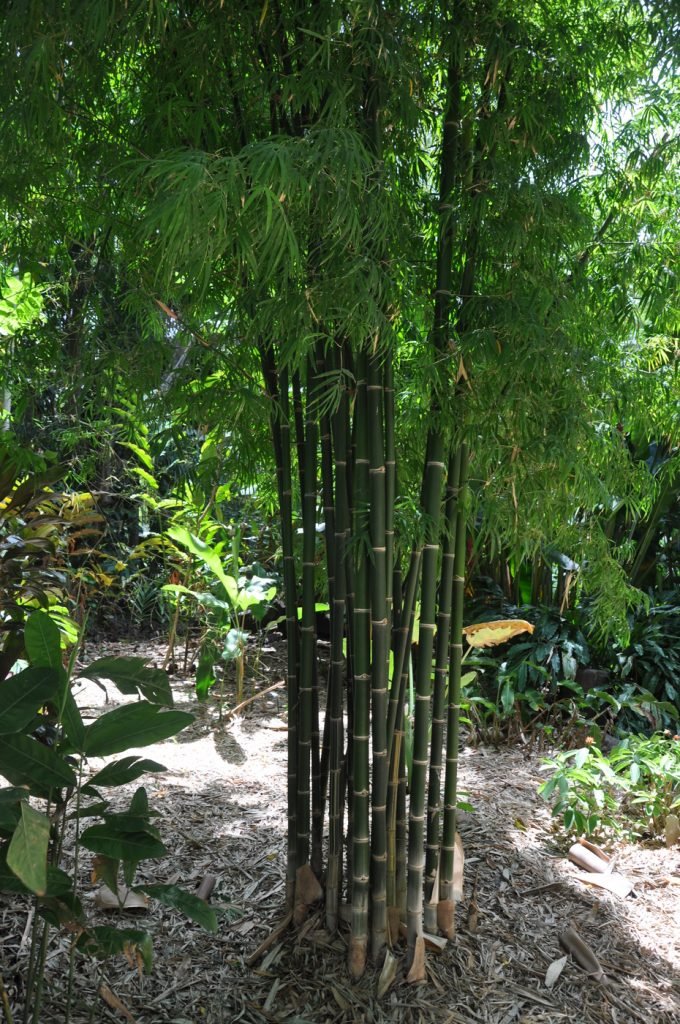 Photo credit: Bamboo Land
Photo credit: Bamboo Land
This bamboo species is characterized for having tiny green leaves and culms with varying green color gradient. The species produces delicate foliage that can form a lush canopy, depending on how they are arranged.
The Thai Silk Bamboo species likes full sun most of the time. However, it is still cold tolerant. It should be easy to grow it in different areas. Since the species has a tiny footprint, you should find it easy to fit it even in the small garden spaces.
The species might not be as cold hardy as come other species, but it can still withstand cold temperatures.
Many people like to use this species as it has an aesthetic appeal. It is an elegant plant that should appeal to many users. For those who need a medium-height privacy screen, this is a nice option for them to consider.
Buddha’s Belly (Bambusa Ventricosa)
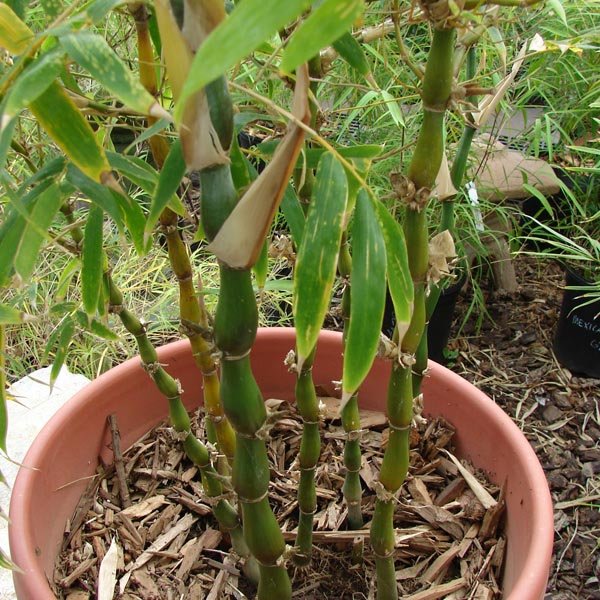 Photo credit: My Garden Life
Photo credit: My Garden Life
This bamboo species has quite an interesting name. It originates from Southern China and can now be grown in Southern California, Hawaii, and Southern Florida.
As for the aesthetics, the plant has tiny green leaves, which are always green regardless of the season. The culms are also green. The internodes swell and that is how it got its name Buddha Belly. These internodes swell when the plant undergoes stress. With this kind of feature, a bamboo owner would pinpoint the issues with the plant.
When it comes to caring for the plant, we find that they need regular watering. That might be the most regular maintenance you have to do. They can also thrive in the sun or shade.
Dragon’s Head Bamboo (Fargesia Dracocephala)
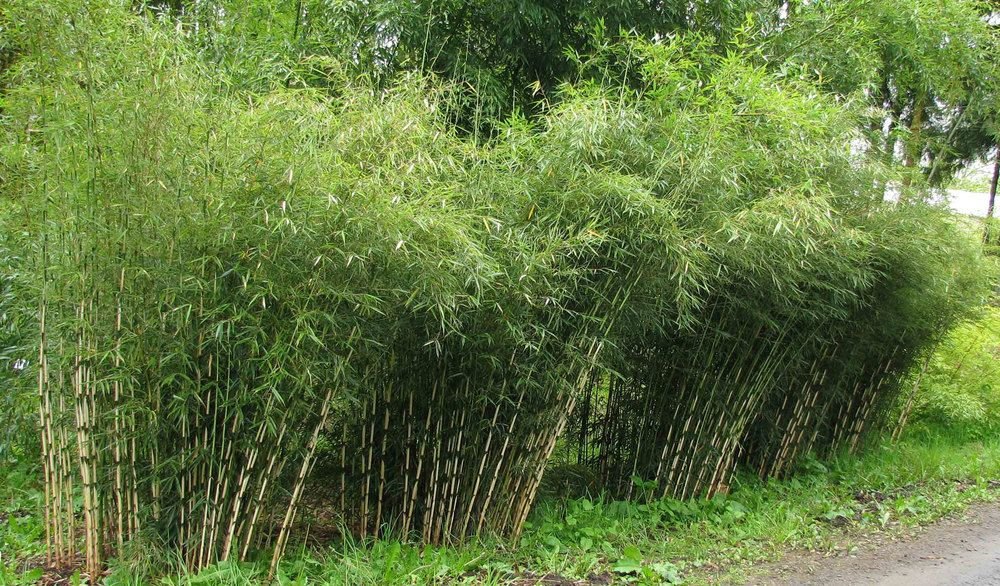 Photo credit: Pinterest
Photo credit: Pinterest
The Dragon’s Head Bamboo species is one of the top options for privacy screens. People use these bamboo screening plants because they can offer low to medium height and they have an evergreen foliage. They also have a weeping form, where the leaves will fall over as they grow.
The species is also very cold hardy. It should easily withstand temperature below 0 degrees F. Other than standing up to cold, the plants are also wind and drought resistant.
You need to understand that too much sun is not ideal for this species. The continuous exposure to sunlight might burn the leaves.
Umbrella Bamboo (Fargesia Murielae)
 Photo credit: Best4Hedging
Photo credit: Best4Hedging
Umbrella Bamboo is another top option for bamboo screening plants. With this species, you will end up with a canopy of evergreen leaves and light blue shoots. You should enjoy the evergreen foliage.
This species is what you need when you want the most cold-hardy bamboo species. They can withstand temperatures below -20 degrees F. The species is best suited for cold environments. It does not do so well when climates with high heat or humidity.
This bamboo species will look great when it gets some shade. You should find it being wind and drought resistant. Many people like the species as it does not need much to maintain it.
Scottish Bamboo (Phyllostachys Humilis)
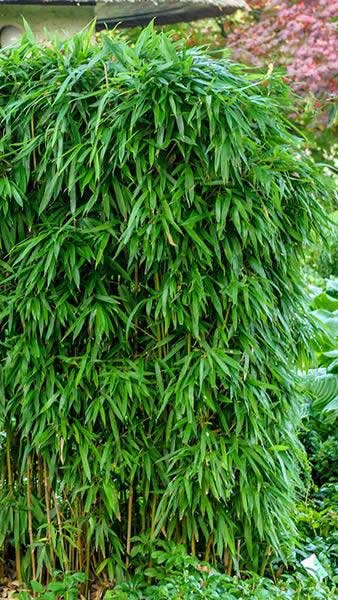 Photo credit: Pinterest
Photo credit: Pinterest
This is the only running bamboo species we have included on the list. The Scottish Bamboo is short and cold-hardy. This makes it perfect for privacy screens whether you grow them in the ground or in containers. The species remains evergreen from the bottom to top. The best part is that it ensures you have a hedge-like appearance for your privacy screen.
Although the average height is about 10 feet, the species can still grow up to 20 feet. This is when you grow it under the right conditions. The USDA zones 7 and 8 will be the perfect location to grow the species.
The shoots start with a reddish color, but turn into mint green when they mature. The culms are always thin with a diameter of 1 inch sometimes less. However, they do grow dense, making sure that you have a thick privacy screen.
FAQs
How much space is required to grow bamboo screening plants?
It is recommended that you provide a growing area of at least two feet wide for the plants. It also depends on how dense you want the screen. Some bamboo species might be denser even with more space between them.
Which one is the best? Running or Clumping Bamboo species?
For setting up bamboo privacy screen, it is best to opt for the clumping bamboo species. They are easy to control so that you can achieve the best screen for your home.
What is the best height for a bamboo privacy screen?
The privacy screen is going to vary in height from one person to another. Some would like to keep it short while others tall. Make sure that you understand the height that the bamboo plant can grow to before buying. With such information in mind, you would have an easier time making up your mind on which species will be best for your screen.
Are bamboo screening plants hard to care for and maintain?
For someone who wants to set up a bamboo privacy screen, the overall maintenance will be on their mind. The last thing they want is to deal with plants that need a lot of maintenance. Luckily, most bamboo species do not require a lot of maintenance. You should have to water them adequately in the first year and then you are good to go. Additional maintenance might include pruning, trimming, and fertilization.
Conclusion
Bamboo screening plants will provide you with the privacy to your home while at the same time make your environment look better. It is why many people are looking to set up these privacy screens now. From the guide above, you should have enough information to help you understand which type of screening plants will be ideal for you. Make sure you do more research about the plants to understand the care, maintenance, and other factors they need to grow better.
0Shares
